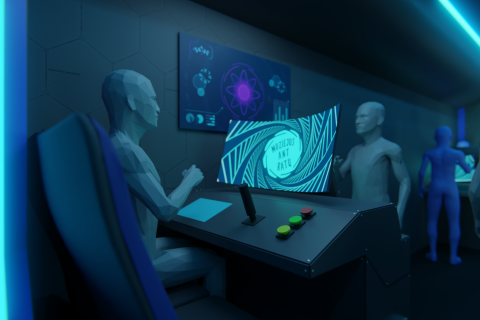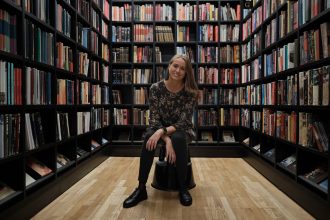The Museum of Lithuanian Education History is one of the oldest in Lithuania. The museum – which was the center of cultural life in Kaunas at that time – founded in 1922, until now has accumulated more than 50 thousand exhibits, some of which are on display on the three floors of the building on Vytautas Avenue. This year, the museum celebrates not only its centenary but also the beginning of a very important project called Museum on Wheels.
Jolita Rudgalvienė, who has been managing the museum for three years now, agreed to explain everything in more detail. The director says that every day is different in this line of work, but her main task and wish is for the museum to become a place of relevant, meaningful experiences and meetings.
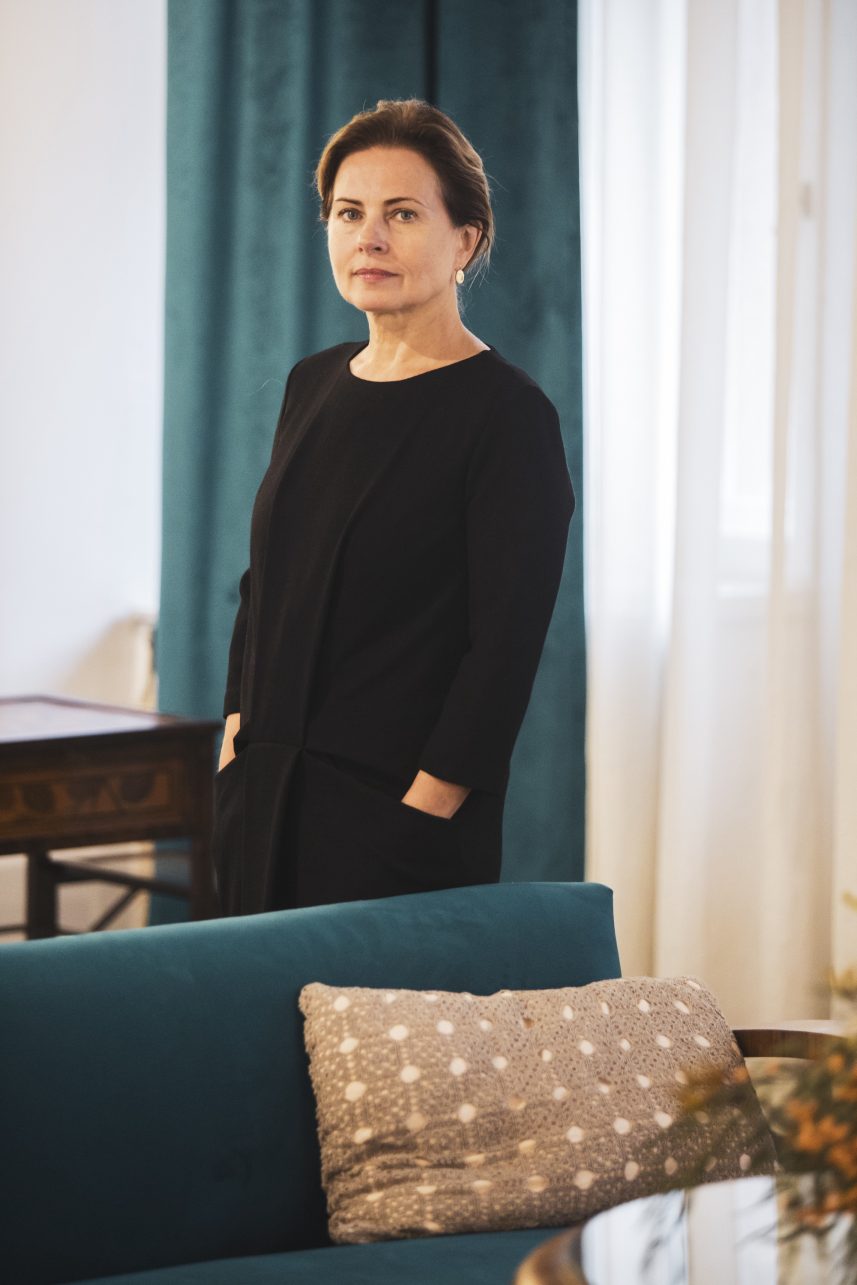
Jolita, what is the history of the museum?
It goes all the way back to the beginning of independent Lithuania. In 1922, the educator Vincas Ruzgas, seeing the problematic situation of teachers and the lack of teaching aids, organized an exhibition of visual teaching aids for teachers and students at the elementary school on the then Prezidento Street (now the section of Vilniaus Street between Laisvės Ave., and the Historical Presidential Palace). It was a huge success, so it was decided to organize a permanent exhibition of visual teaching aids for teachers and students. Finally, the mayor of the city, Jonas Vileišis, signed an order on the appointment of V. Ruzgas as the director of the future museum and provided three modest rooms for his activities on Laisvės Ave. 12 (now Laisvės Aven. 24). Pedagogical Museum officially started its activities in Kaunas on November 18.
V. Ruzgas was chosen as the head of the museum and reading room for a reason. A man, who had completed three years at the Herzen Pedagogical Institute in St. Petersburg understood the importance of education in the system of a developing state. Pedagogue, museologist, librarian, naturalist, public figure, and author of textbooks devoted his whole life to the creation and popularization of the education system. He was a member of V. Kudirka’s librarians’ union, Ethnographers’ union, Lietuvos vaikas’ union, Lithuanian culture’s union, Lithuanian teachers’ union, Baltic teachers’ union, and other organizations, of which he was often either a founder or a head. He also organized pedagogical courses for teachers, wrote and published articles in the press.
From 1922 to 1940, with the help of Vicas Ruzgas, the museum became one of the cultural centers of Kaunas at that time. How did the museum change over the years?
During its hundred years of existence, not only the name of the museum changed (the Pedagogical Museum became the Museum of Lithuanian Education History). Its location also changed. For example, it moved from Laisvės Avenue to Ugniagesiai Palace and later to a house in Žaliakalnis. Its current address – Vytauto Ave. 52 – is the 8th in the museum’s history.
the museum testifies to the people’s destinies and the aspiration to get an education despite all the obstacles.
Just a year after its establishment, the museum already had seven departments with a natural corner that contained rare house plants, silkworms, crayfish, several types of fish, and birds. Children were especially interested in this section. At the initiative of V. Ruzgas, who looked for funding in both city and private funds, the bookshelves of the Central Teacher’s reading room were also rapidly filling up.
The museum and reading room employees did not stop at collecting exhibits. The museum premises included a lecture hall, where famous public figures, scientists, and educators of that time gave popular lectures: Kazys Grinius, Jonas Vileišis, Kazys Sleževičius, Jonas Vabalas-Gudaitis, Vaclovas Biržiška, Jonas Šliūpas, Antanas Purėnas, Vladas Lašas, Vincas Čepinskis, Antanas Busilas, Antanas Vokietaitis, V. Ruzgas himself and many other representatives of Kaunas intelligentsia.
Press review exhibitions were also held in the Pedagogical Museum and the Central Teachers’ reading room. Meetings of publishers, authors, readers, and conferences took place at the exhibitions. Ruzgas also helped shape a new activity – educational tours, which later grew into teacher training courses throughout Lithuania.
During the German occupation, the museum was closed, and its exhibits were hidden. Part of the exhibits and the entire archive were lost.
Why do you think this museum is necessary for today’s Kaunas?
The museum is needed not only for Kaunas but also for Lithuania. It is a living witness to the creation of our modern European nation. From the very origins of education in 1397, from the appearance of secret schools to the first compulsory free primary education in the interwar period, the museum testifies to the exceptional importance of education, people’s destinies and the aspiration to get an education despite all the obstacles. For today’s people, for whom education has become easily accessible and self-evident, it is important to know the evolution of education and understand its value. We implement this mission with our exhibitions, work, and projects.
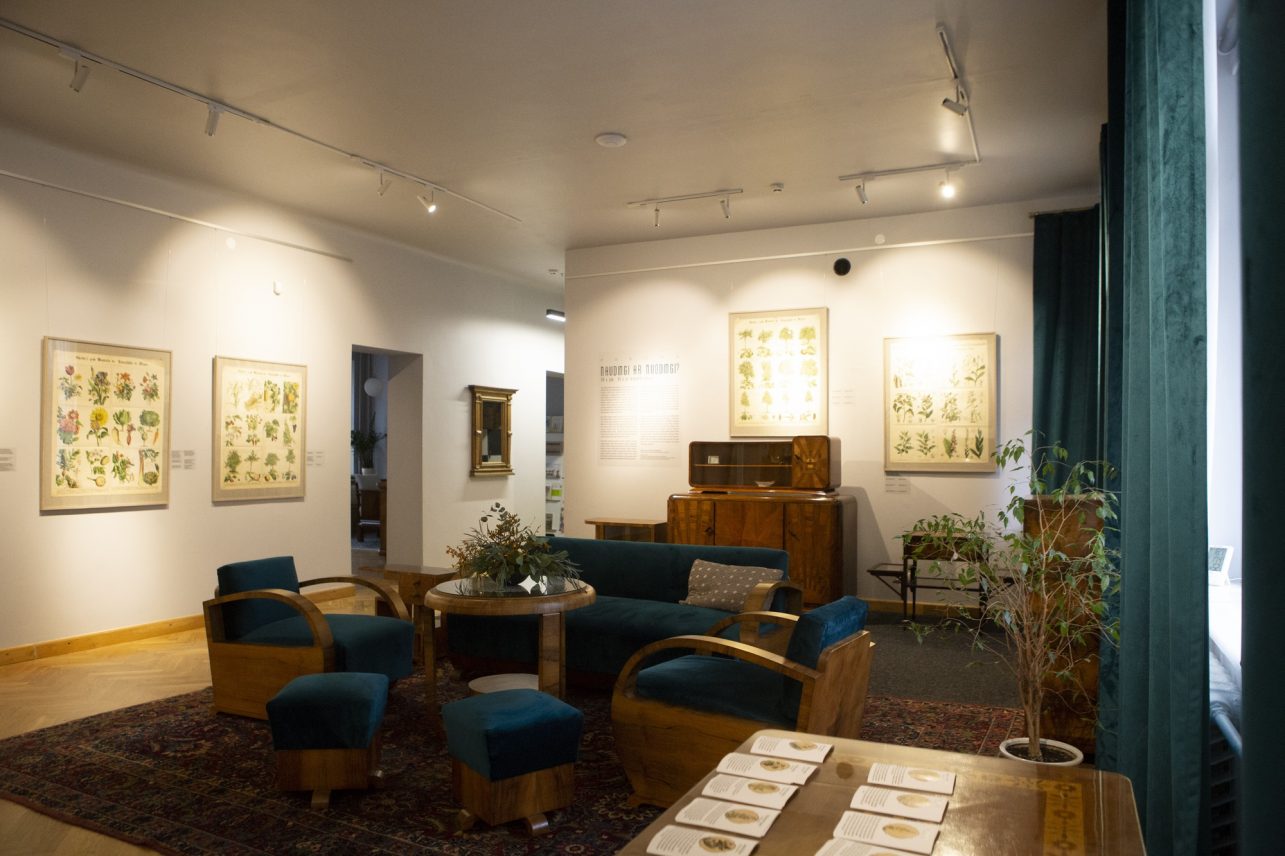
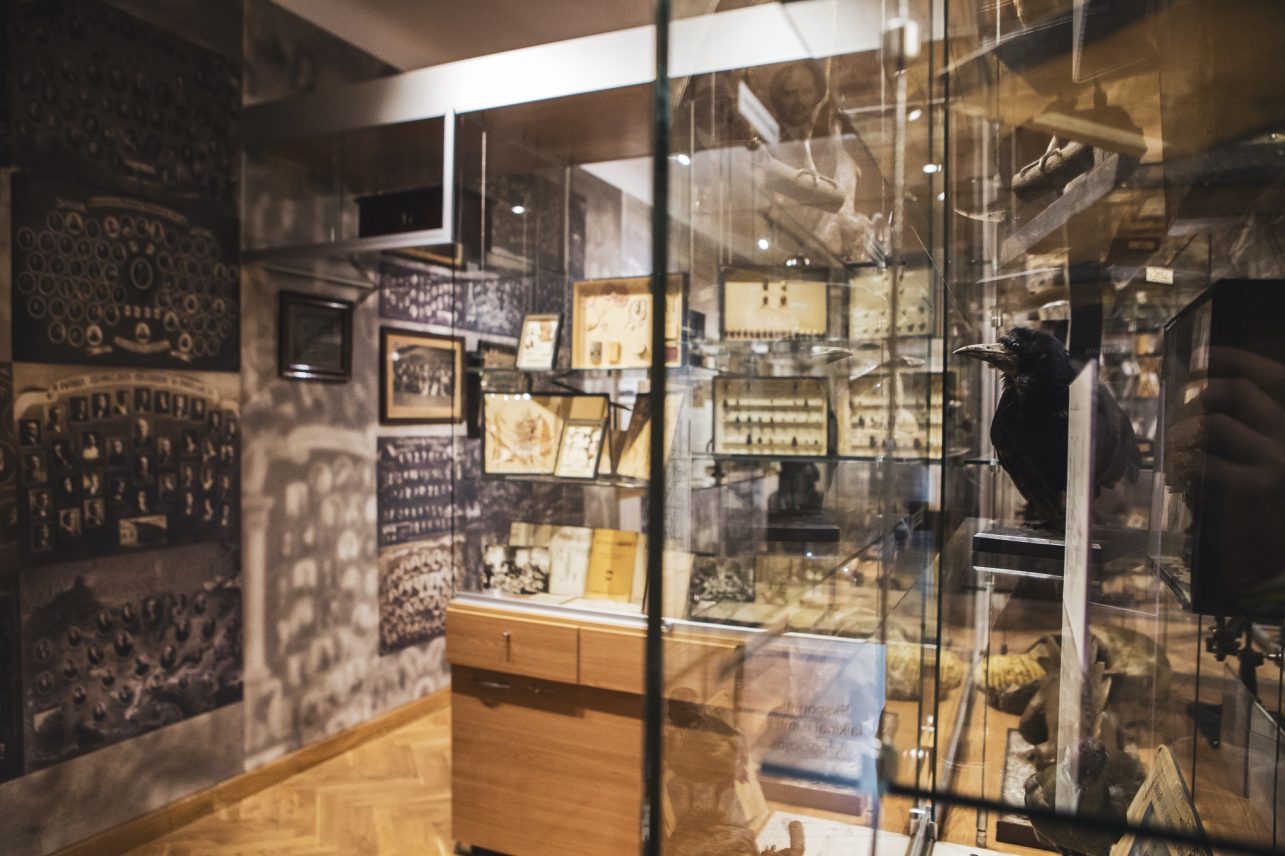
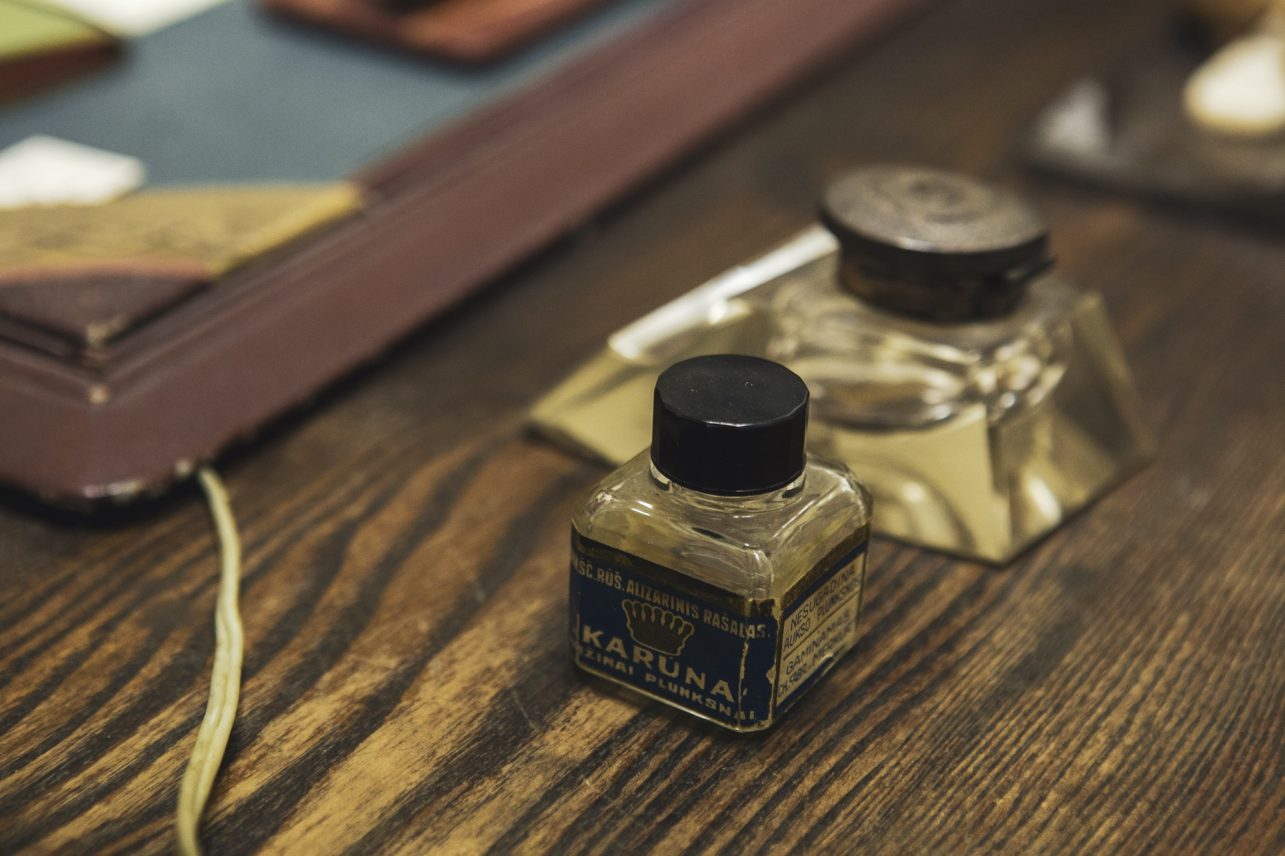
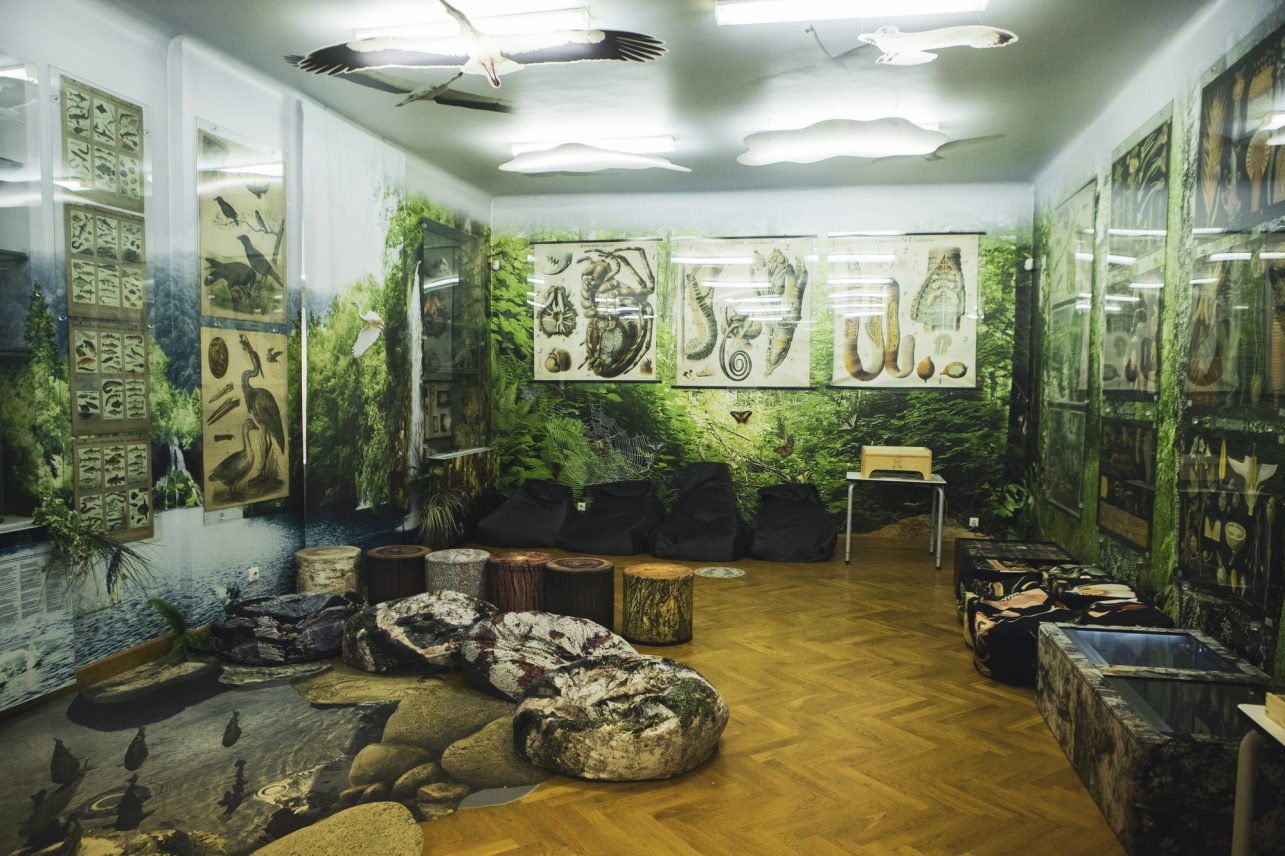
The museum preserves and exhibits old Lithuanian pedagogy books, textbooks, curricula, methodological literature, and materials on the history of schools. How does it all fit on three floors?
On the first floor, we have spaces for temporary exhibitions, where the works of Marc Chagall, René Magritte, and Salvador Dalí have already been exhibited. After visiting the exhibitions, visitors can sit in the art deco-style salon and enjoy tea. The more curious can also visit the memorial room of V. Ruzgas and the reading room, as well as the educational classroom and the souvenir shop.
The second floor contains the main exhibition, where you can see century-old textbooks, benches, old stationery, and even kneel on some dried peas.
The top floor is dedicated to educational space. Here you can try writing with a quill or an old typewriter and encode a text using Morse code or the Enigma electromechanical encryption machine. We also have a Montessori room for events and a room for film screenings.
I think two hours would be enough for a meaningful visit. But the more carefully you analyze the exhibits, the more they speak to you revealing new treasures. Either way, it’s a truly inspiring journey.
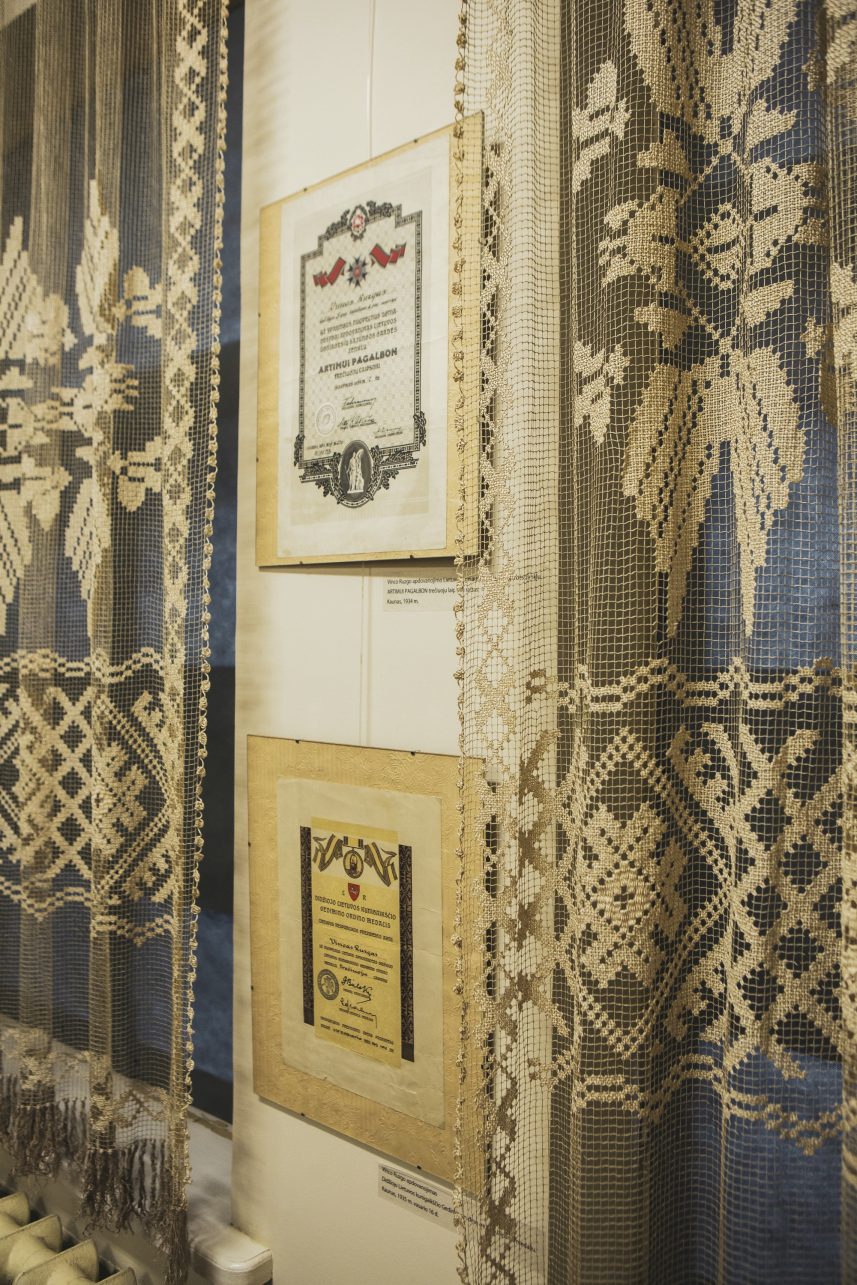
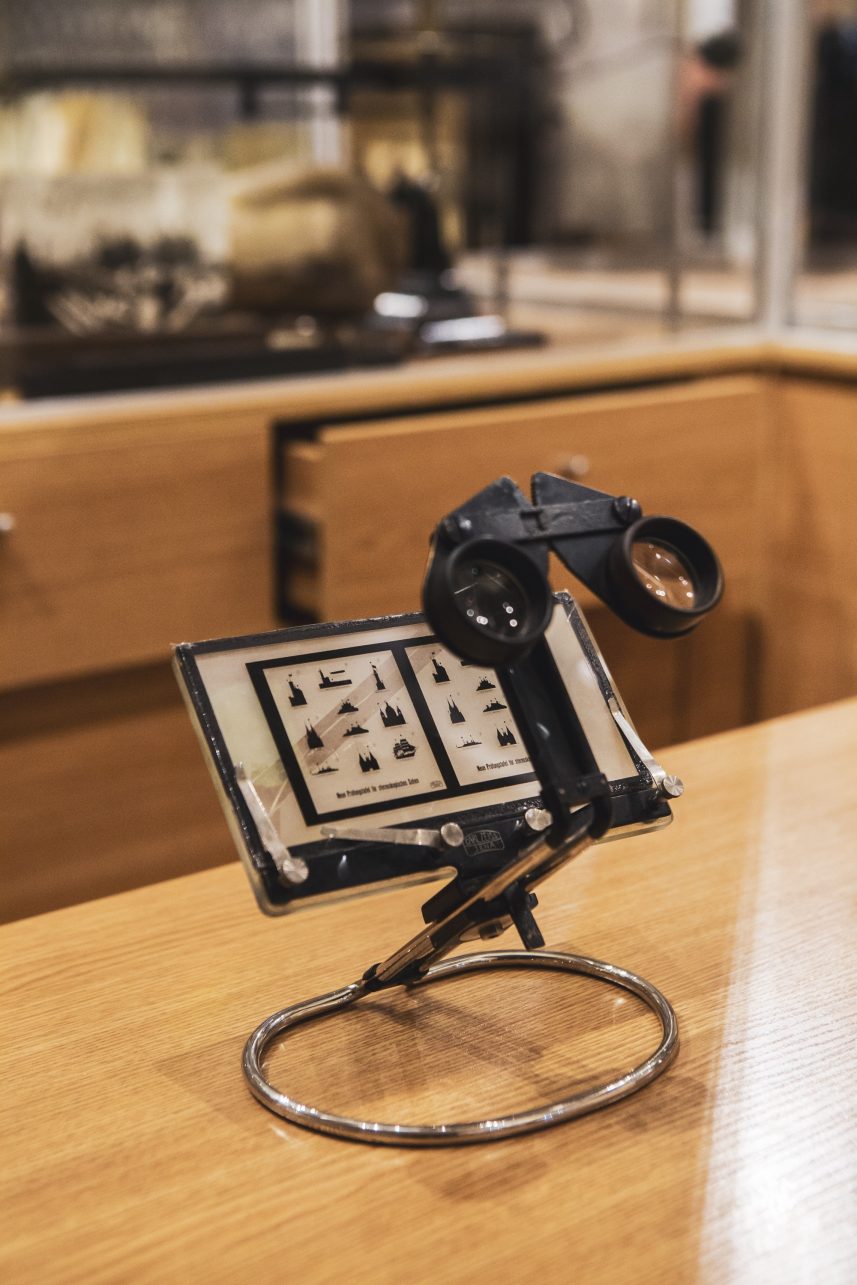
A month ago, the museum exhibited Salvador Dalí’s Divine Comedy exhibition featuring 100 original woodcuts. What was the response after the exhibition? What will we see in the future?
The exhibition attracted many visitors. And the museum’s greatest desire, and at the same time its challenge, is to be relevant and interesting. There will be more meetings with famous artists, travelers and scientists.
We are planning to restore the lecture series. In October we had a lecture by herbalist Marius Lasinskas. A huge interest in it only proved that we are on the right track.
By the way, the exhibits of the museum’s fonds are also worthy of visitors’ attention. At the moment, you can visit the Edible or Poisonous exhibition that features exceptionally beautiful educational posters of plants – printed on canvas – from 19th century Germany. The exhibition is accompanied by museum souvenirs – linen tablecloths with QR codes, through which you will find out what plants are on the tablecloth, what are their benefits, smell and maybe even recipes.
What makes the anniversary year special for the museum?
This year signifies meaningful work for the museum. In addition to day-to-day activities, all year we have been organizing events dedicated to the centenary. For example, together with the Vincas Kudirka Library (Vincas Ruzgas was also the founder and first director of this library), we prepared a tour On the Path of Vincas Ruzgas’ Light that takes you around all the previous historical premises of the museum. In the summer we organized an emerald evening and a film screening in the museum’s courtyard. Museum: A New Teaching and Learning Space conference took place on October 21. There is no lack of activities. Soon, we are planning on opening an exhibition called Just Like a Hundred Years Ago and presenting a big museum project Museum on Wheels.
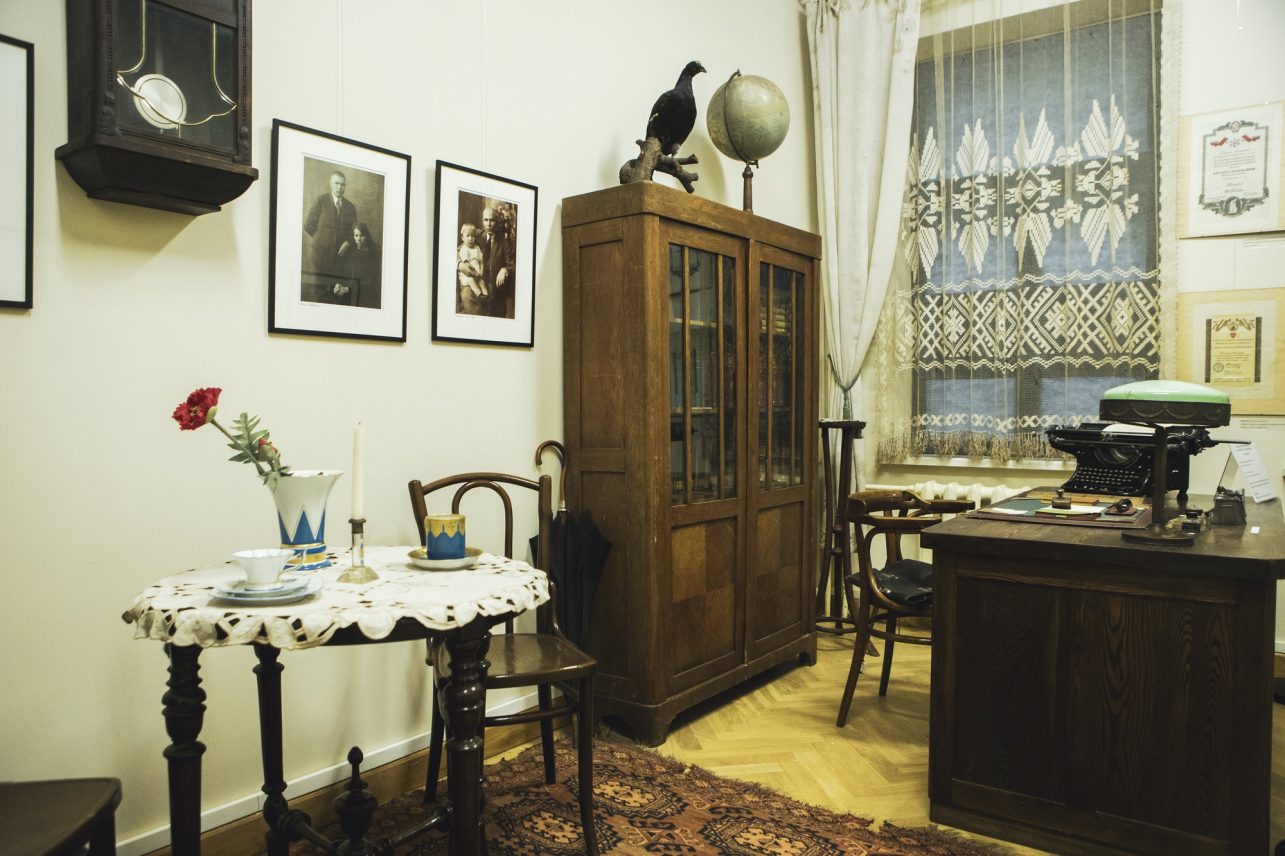
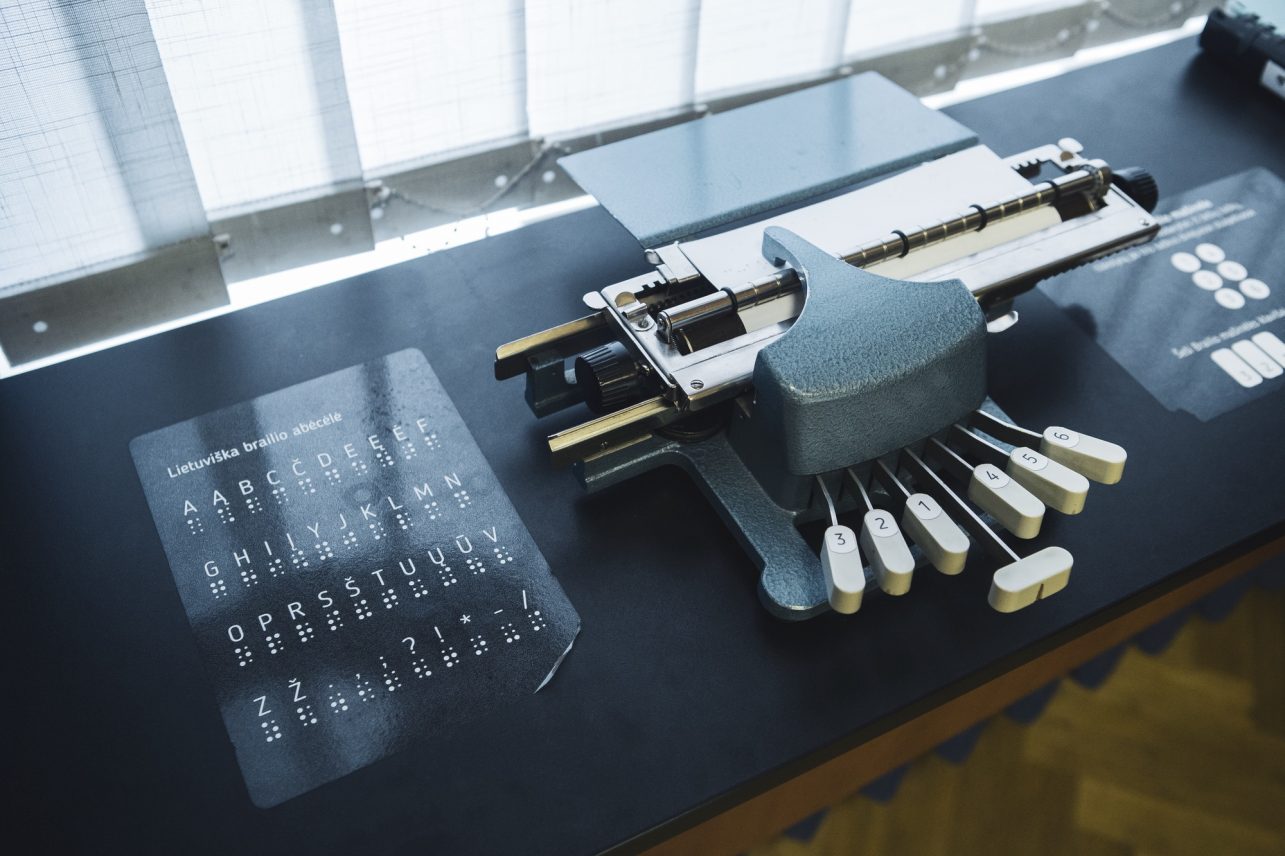

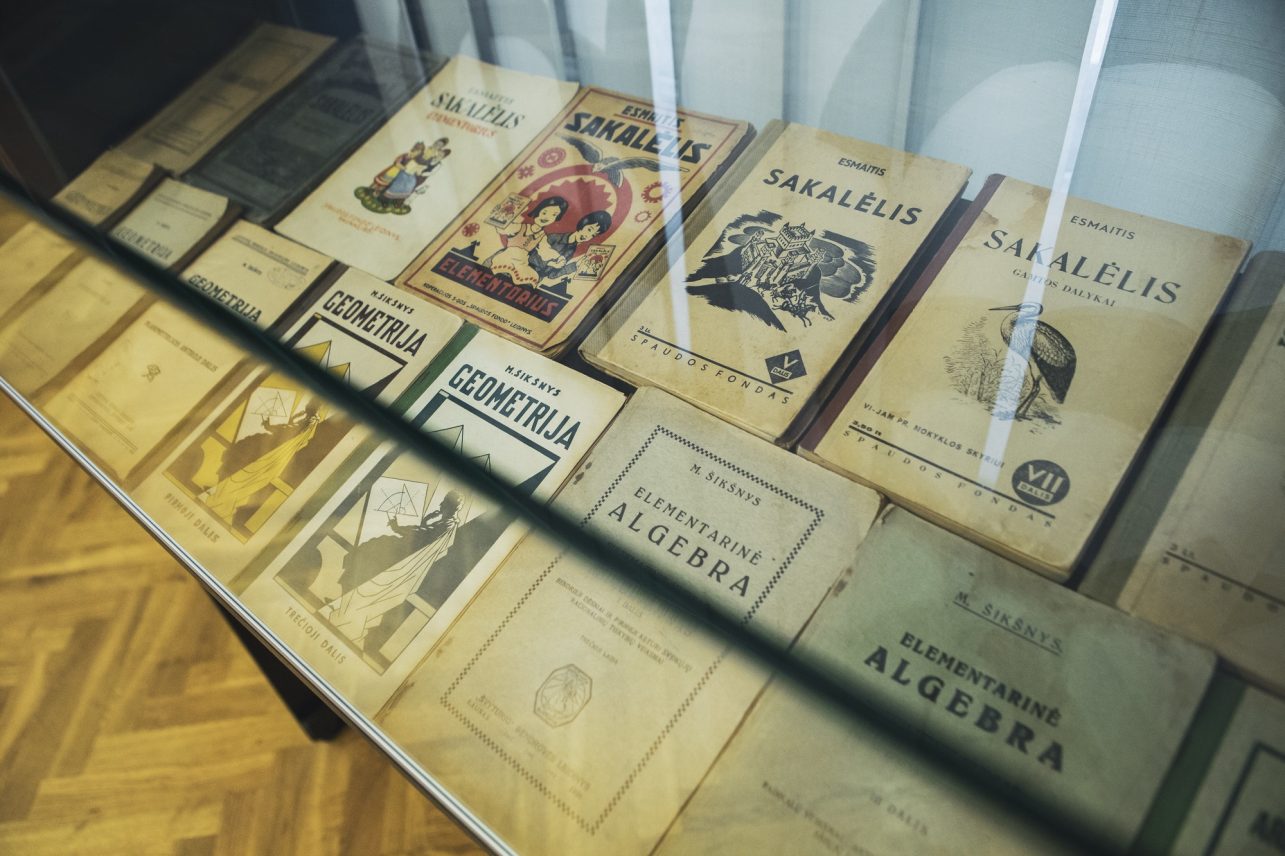
The anniversary is accompanied by a very nice rubric on social media called Greetings from the Past.
These are the greetings found in the museum, which we follow while moving towards the commemoration of the centenary. On the 18th of every month, we publish a greeting from the past, which the museum has received from visitors, educators, and famous people, on social media and the museum’s website. For example, in 1927 Paulius Galaunė, the director of the M.K. Čiurlionis Gallery, could not “personally attend” the celebrations commemorating the five years of activity of the Pedagogical Museum, so he sent a telegram wishing the museum “success in its further endeavors.”
Rector of the University of Lithuania Mykolas Romeris send these greetings to the museum on Novemver 20, 1927, “On behalf of the University of Lithuania, I congratulate the Pedagogical Museum and express my true respect and sincere liking of this beautiful and useful cultural institution. The University of Lithuania, as the highest institution of not only science but also of education in Lithuania, is organically connected with all educational work and all areas of pedagogical activity in Lithuania. It is on that work that the preparation of young people for higher education as well as the productivity of university’s work depends on. … During its five-year anniversary, the Pedagogical Museum has a good reason to be proud of the work it has done … Your anniversary is accompanied by affection and true respect from those, who value education and culture in Lithuania. Glory to you and glory to Kaunas that decided to establish you and continues to foster you.”
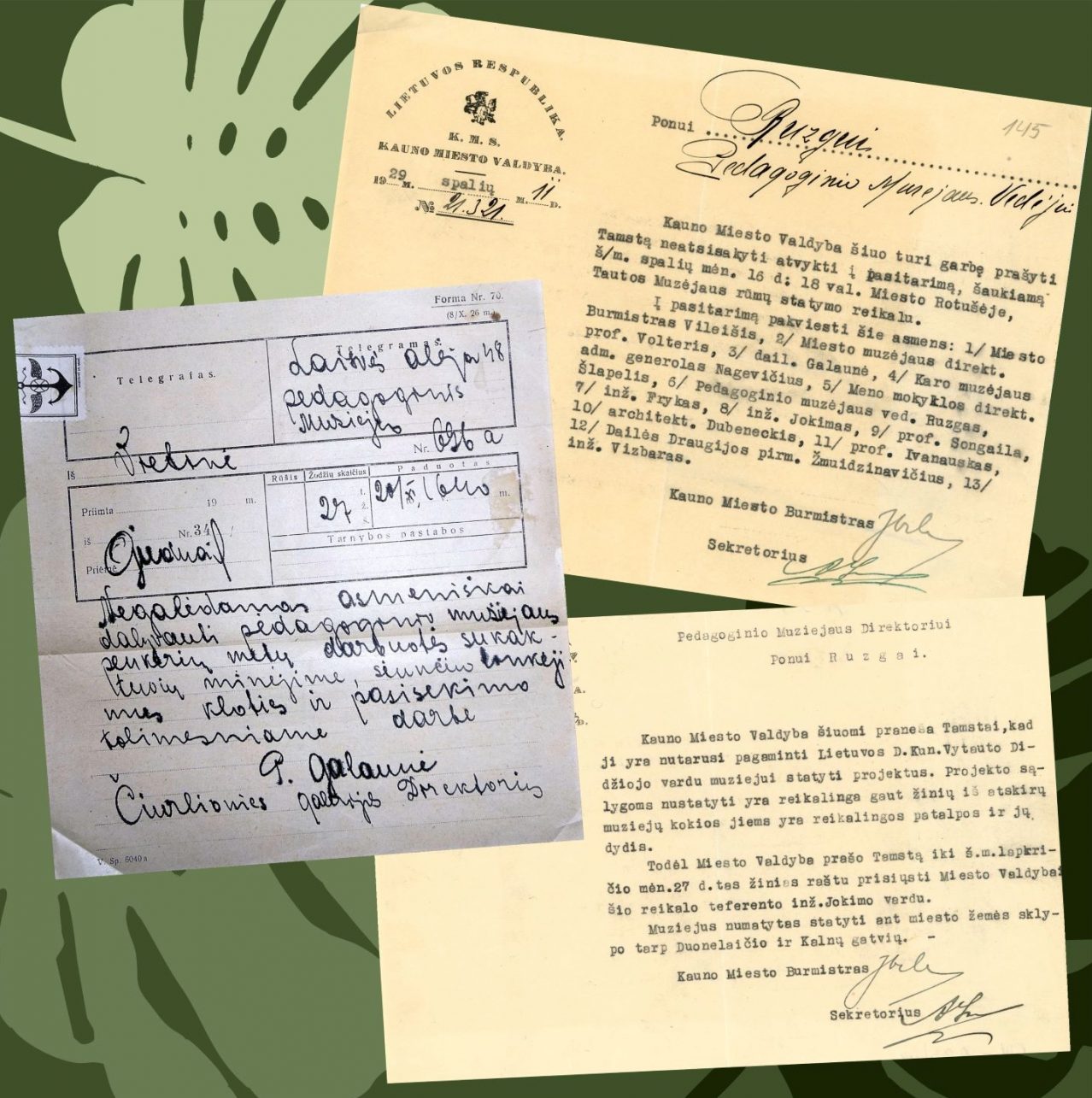
Or this greeting card on the occasion of the International Day of Museums, received in 1994, two years after the restoration of the museum in Kyiv (the Pedagogical Museum of Ukraine was founded back in 1902). Unfortunately, a closer relationship between the museums did not develop. But today we wish our colleagues not only “good health, interesting discoveries, and achievements at work” – which they wished to us from Kyiv 28 years ago – but also the victory of truth, light and freedom. I think that the greeting of the colleagues from the Ukrainian Pedagogical Museum once again confirms the important role of education and training and the cultivation of historical memory in society, as humanity is still on its way to becoming nobler.
Speaking of rubrics, I have to mention one more: Interesting Exhibit. How do you choose an exhibit to talk about?
With this section, we aim to publicize the exhibits in the museum’s collections, which are not visible to visitors. Once a month we tell a story, share an image. The idea came from talking to the staff – we discussed that not everything we have is shown in the exhibitions. The first exhibit we shared was a mammoth jaw found during the excavation and construction of Aleksotas funicular.

